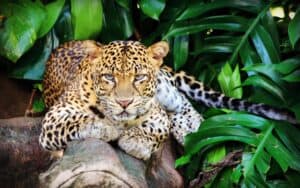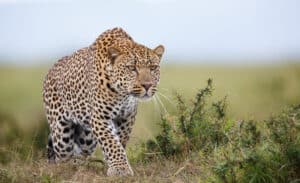If you’ve ever watched a housecat stalk its prey, you’ll appreciate its preternatural stealth and grace. Now imagine a much larger cat crouched in the shadows, eyes glowing in a spotted golden face. Meet the sleek leopard, a clever and vicious predator. But how many leopards are left in the world? And do we have a chance at preserving them? Find out below!
Types of Leopards
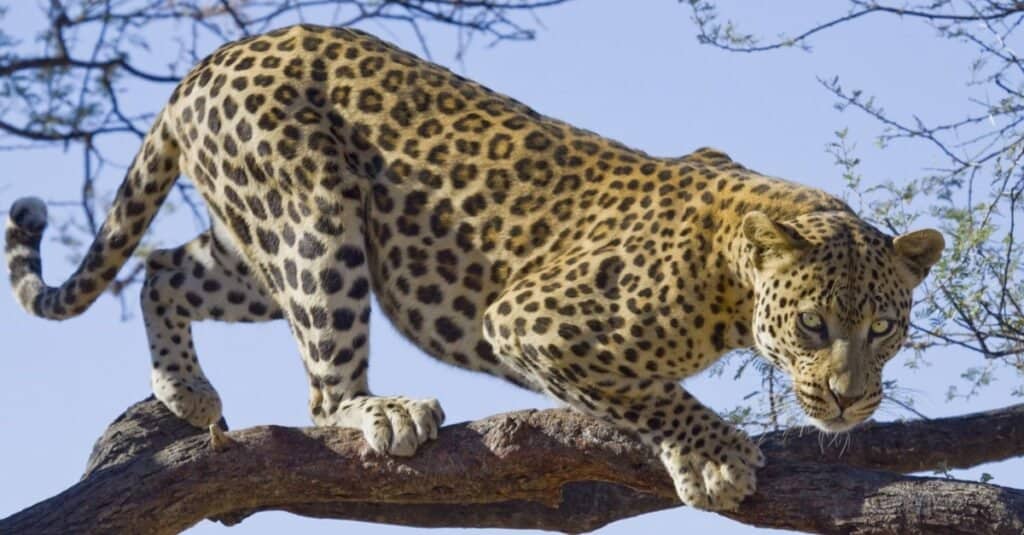
There are nine subspecies of leopards currently in existence.
©Michael Wick/Shutterstock.com
There are 9 subspecies of leopards currently in existence. The most famous is the African leopard. The other 8 subspecies are the Indian leopard, Persian leopard, Arabian leopard, Indochinese leopard, North-Chinese leopard, Sri Lankan leopard, Javan leopard, and Amur leopard.
Most leopards are marked by pale yellow or deep golden coats with black rosettes and spots. Interestingly, panthers are a unique variety of both leopards and jaguars. Their unusual dark coats are their distinguishing feature. The signature rosettes are often still visible.
Leopards are the smallest of the big cats behind tigers, lions, and jaguars. Persian leopards are the largest of the 9 subspecies with a body length of up to 6 feet. Males can weigh as much as 200 pounds. The smallest subspecies, the Arabian leopard, has a body length of up to 4 feet. It usually doesn’t weigh more than 70 pounds.
How Many Leopards Are Left in the World?
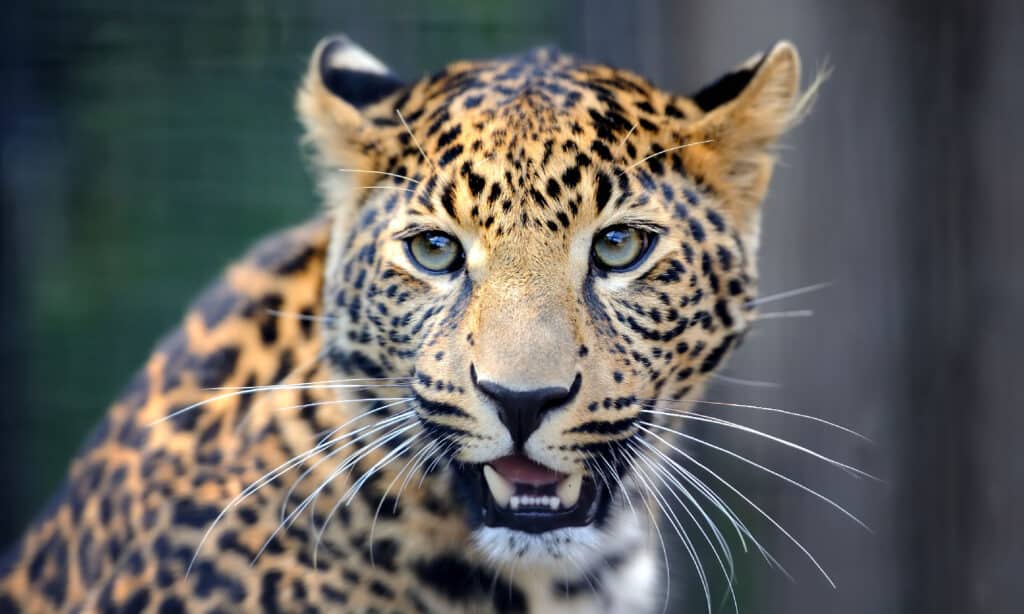
There are as many as 250,000 leopards in existence. They are divided into 9 subspecies.
©iStock.com/Byrdyak
As many as 250,000 leopards exist in the world today. Conservationists list leopards as Near Threatened. Thankfully, enough of them remain that repopulation is a possibility.
However, some subspecies fare worse than others. The Amur leopard is the rarest with only about 100 individuals left in the wild. 180-200 live in captivity. It is listed as Critically Endangered and could soon be extinct. With these statistics, it is likely the most endangered big cat in the world.
Likewise, the Javan leopard lands on the Critically Endangered list with about 250 mature adults left in the wild. Unfortunately, human encroachment on its habitat means its chances for survival have dwindled. The Arabian leopard is also on this list with a meager 200 individuals remaining. If we do not take action to save these subspecies, they could soon disappear.
What Place in the World Has the Most Leopards?
As a continent, Africa contains the most leopards. The species exists primarily in central, eastern, and southern Africa. Western countries like Sierra Leone and northern countries like Morocco and Algeria also contain a small number. Its most common habitats are savanna grasslands, rainforests, and mountain regions. Desert, semi-desert, and arid regions also host their share of leopards.
In East Africa, the country Zambia is famous for its leopards. Its South Luangwa National Park boasts the best sightings on the continent. Tourists hoping to catch a glimpse of a wild leopard may consider this their top choice.
Leopard Diet and Predators

As apex predators, leopards sit at the top of the food chain.
©iStock.com/UrmasPhotoCom
Leopards are cunning, solitary carnivores. As apex predators, they sit at the top of the food chain. Their preferred prey are medium-sized mammals like deer, warthogs, and baboons. However, they are willing to eat a diverse range of animals including birds, rodents, reptiles, and even dung beetles. This flexibility has allowed them to persevere under challenging conditions.
Apex predators normally have little to fear from other hunters. But as the smallest of the big cats, leopards are occasionally in danger from other top predators. Lions, jaguars, and hyenas are all potential threats. They may even try to steal a leopard’s food. For that reason, leopards often haul their kills high into the trees where they can eat in peace.
Why Are Some Leopard Populations Endangered?
Poaching remains one of the main reasons for the decline of leopard populations. The Amur leopard suffers greatly at the hands of trophy hunters. Leopards often live near human settlements, making them easily accessible. They are mainly killed for their luxurious fur. Hunters sell the furred skins as rugs or items of clothing.
Poaching also affects important prey like deer and rabbits. This makes it harder for wild leopards to sustain themselves. The Amur leopard struggles to survive due to the decline of prey animals in China.
Despite backlash from conservationists, trophy hunting is still legal in many countries in the world. Zambia, Tanzania, and Mozambique are examples of African nations with this policy. Additionally, many farmers see leopards as pests. To keep their herds and flocks safe, they may attempt to exterminate local populations.
Pollution and loss of habitat also remain a problem. Illegal logging has seriously reduced the land available as a habitat.
Do Leopards Hunt Humans?
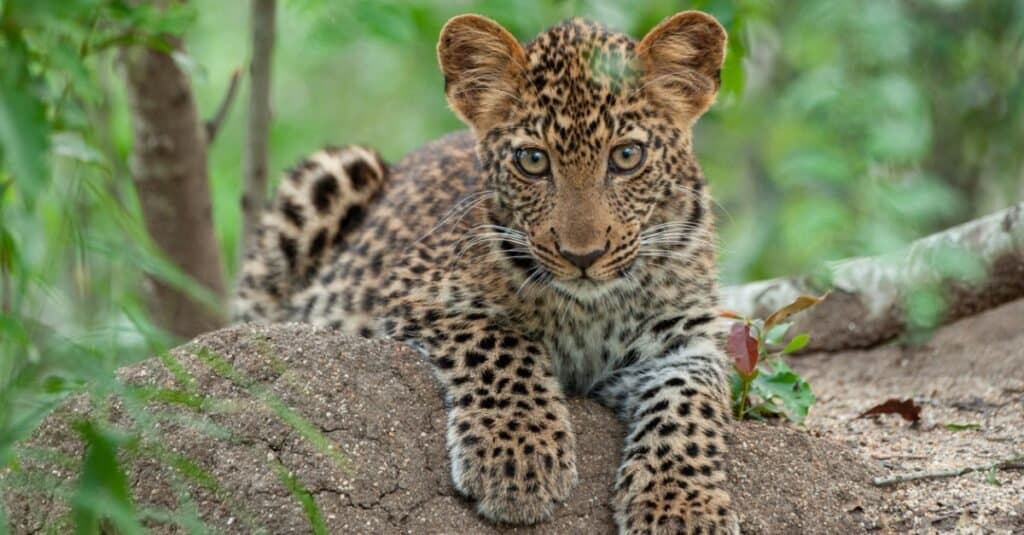
Humans are not typically a leopard’s preferred prey.
©iStock.com/RudiHulshof
Humans are not typically a leopard’s preferred prey. However, as opportunistic hunters, leopards take whatever meal they can find. Vulnerable people, especially children, can easily become prey.
A famous case of a man-eating leopard occurred in India in the early 1900s. The Indian leopard was known as the Leopard of the Central Provinces or the Devilish Cunning Panther. Over a period of a couple of years, it killed 150 women and children. Eventually, it was shot. One theory suggests that its mother had fed it human flesh when it was a cub, encouraging a preference for human prey.
Leopards in Captivity
Hundreds of leopards exist in captivity in zoos, circuses, and exotic pet collections. In the wild, leopards live from 10-15 years. In captivity, they live as long as 20 years. It is common to see big cats pacing in their cages, frustrated because they cannot stalk and hunt.
Though leopards can produce healthy offspring in these environments, it is almost impossible to release these animals into the wild. They lack the skills needed to survive on their own and are forced to remain with their human owners.
For Amur leopards, captivity may be the only way for humans to preserve them. Without drastic action to recover their natural territory, they will soon be lost in the wild.
Leopards of all kinds are fascinating, fiercely independent creatures deserving of respect. Their numbers will hopefully continue to increase with time and care.
The photo featured at the top of this post is © iStock.com/lightstock
Thank you for reading! Have some feedback for us? Contact the AZ Animals editorial team.



